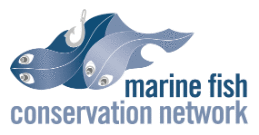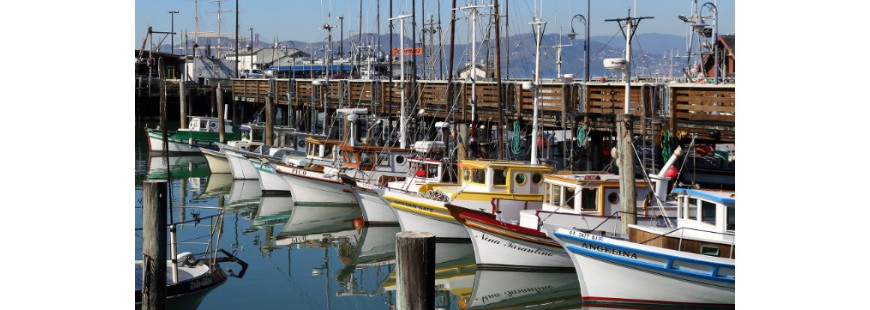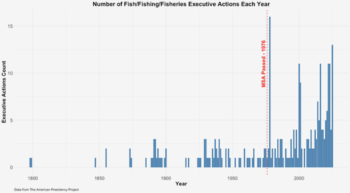This article was originally published in the Wild Oceans Horizon Summer 2025 newsletter and is reprinted with permission.
In 1973, Congress passed the Magnuson Stevens Fisheries Conservation and Management Act (MSA), and Wild Oceans met the moment with a voice for conserving and protecting marine fish, fishing and our oceans for future generations. Fifty years later, NOAA Fisheries continues to report progress towards this goal, with a decrease in number of stocks on the overfishing and overfished lists despite challenges, including a changing ocean. However, the status of some stocks such as Atlantic Cod remains frustratingly stagnant and the fluctuations of forage species such as sardine and mackerel trigger greater ecosystem level concerns. Continued improvements are hampered by lacking legislative initiatives and long, complex management processes as Regional Fishery Management Councils address new issues with thinning resources.
To evade these barriers and act quickly, the Trump Administration has used Executive Actions (EAs) to enact change specifically at the Council level, which includes Executive Orders (EOs), Memorandums, and Proclamations. Since January, the President has signed eleven fisheries related EAs. The most consequential to marine fisheries include those in the table below:
In tracking this flurry of EAs, it became evident that a historical perspective could be useful. Sifting through past EAs, we found 267 relevant. We decided to compare the eras of EAs, dividing them into Pre-MSA and Post-MSA, based on usage trends and modern management development. In addition, we compared the current administration to other Post-MSA administrations. Across these eras, three themes enlighten Wild Oceans’ work as we respond to these directives.
Establishment of National Monuments
Pre-MSA, 33 of 80 EAs established area-based regulations, many targeting spawning area preservation. The first of these was by Benjamin Harrison through Proclamation 343. Post-MSA, EAs establishing nature preserves have more than doubled. Kicking off the era, on December 1, 1978, Jimmy Carter established or enlarged 15 national monuments that mention fish. Of the five marine national monuments, George W. Bush established all four located in the Pacific and Barack Obama established the sole Atlantic monument.
In the modern era, only Ronald Reagan, George H. W. Bush, and Donald Trump have not established a national monument tied to fisheries. However, President Trump has signed EAs on monuments—attempting to reopen, rather than establish or expand. In 2020 he reopened the Northeast Canyons and Seamounts Monument, followed by reopening PRIMNM in 2025. Yet extensive research in 2018 and 2024 shows marine protected areas and monuments provide major ecological, economic, and community benefits.
Rise of the Conservation Movement
The Marine Conservation Movement began in the 70s and is not truly a part of Pre-MSA EAs. However, EAs from John Kennedy, Lyndon Johnson, and Richard Nixon could be considered early conservationism. These focused on creating recreational advisory councils and clean water action. Modern EA fishing conservation is characterized by attention to coral reefs and food webs, recreational opportunity creation, destructive fishing practice regulation, and climate action. Many of these EA’s are consistent with Wild Oceans’ mission. For example, the Clinton Administration’s EO 13186 connected birds and fish, representing an early understanding of ecosystem-based fishery management. Today, osprey are an indicator species and charismatic champion for the menhaden forage base. Additionally, a Bush Administration memorandum called for ending “destructive fishing practices” which destroy long-term productivity of fish stocks for short-term gain. Wild Oceans’ work on longline and midwater trawl gear fit this charge.
The current administration’s EO 14313 mirrors that of the Johnson Administration’s, which also created a committee on preserving natural beauty. Johnson’s committee is credited with creation of eleven national recreation areas. It remains to be seen if the current Commission will similarly safeguard natural resources.
Directives to Regional Fishery Management Councils
Modern EAs rarely reference Councils. We identified an EA evoking the Councils only three times–once in 2000 when Bill Clinton consulted the Western Pacific Council on coral reef protection and twice from Trump Administrations in 2020 and 2025. Therefore, the current administration’s solicitation for expansive Council recommendations in EO 14276 is unique.
For months, Wild Oceans’ staff have been tracking recommendations Councils will submit in response to the EAs. Many have signaled their recommendations will become their priorities. Understanding how Council resources will be deployed guides us on where we can best intervene to ensure scientifically rigorous policies are enacted to conserve fish. While final recommendations are not yet decided, some proposals are troubling.
From the Mid-Atlantic, two proposed recommendations give us pause. Specifically, 1) considering an alternative rebuilding approach for Atlantic mackerel which would increase yields by reducing the probability of rebuilding the stock from 61% by 2032 to 50% and 2) reopening the Northeast Canyons & Seamounts Monument to commercial fishing. Atlantic mackerel are already at historic lows for biomass and reopening the only Atlantic monument could harm large pelagics that rely on canyon feeding grounds.
In New England, the Atlantic Herring Planning and Development Team discussed recommending deregulating the already overfished Atlantic herring. Examples include removing herring industry-funded monitoring, midwater trawl requirements to carry observers in groundfish closed areas, and river herring and shad monitoring/avoidance areas. These were enacted as middle-ground regulations negotiated over years in a public forum. Tossing them out en masse is disingenuous to the process and kicks the stock while it is already down.
The Western Pacific Council voted to urge the President to lift the prohibition on fishing in Papahānaumokuākea National Marine Sanctuary. The U.S. longline fleet has reported high catch rates of striped marlin in this area.
Finally, we have seen an overall slimming in regulations, Councils are willing to take up, especially ecosystem work. For Wild Oceans, effective management is defined not by the number of regulations but by the quality of provisions that allow response to changing ocean conditions, stock dynamics, and putting the resource first. EAs can be valuable for initiating near-term action to achieve this by bringing attention to issues. For example, EO 14276 has reestablished the push for the universal use of circle hooks—a battle Wild Oceans is very familiar with.
But EAs should not bypass Councils’ iterative processes or accelerate deregulation at the expense of overfished stocks. While we do not always agree with them, Councils and NOAA provide decades of expertise, infrastructure, and a transparent process that remains the backbone of US fisheries management. Calls to speed up timelines and reduce burdens are valid, but mass regulation elimination without standard public input risks undermining this framework and creating inequities. We urge providing Councils with resources to reduce burdens while maintaining their core work of protecting resources for future generations.
Looking back at EAs, executive level requests for Council recommendations are rare. Recognizing this moves us to capture the opportunity to inform top decision makers about the importance of Councils and their role in protecting our natural resources. Wild Oceans will continue tracking Council recommendations and engaging on EAs as they evolve as a novel management tool.





How does this E.A. going to affect the shrimp fishing industry in Louisiana when 1. No one here fish in the Pacific. 2. Biggest regulation that most fishermen will complain about is the use of TEDs. A lot of regulations are for the fisherman’s own good such as opening of seasons etc. 3. Some who are directly involved with commercial fishing are concerned about many of these regulation roll backs.